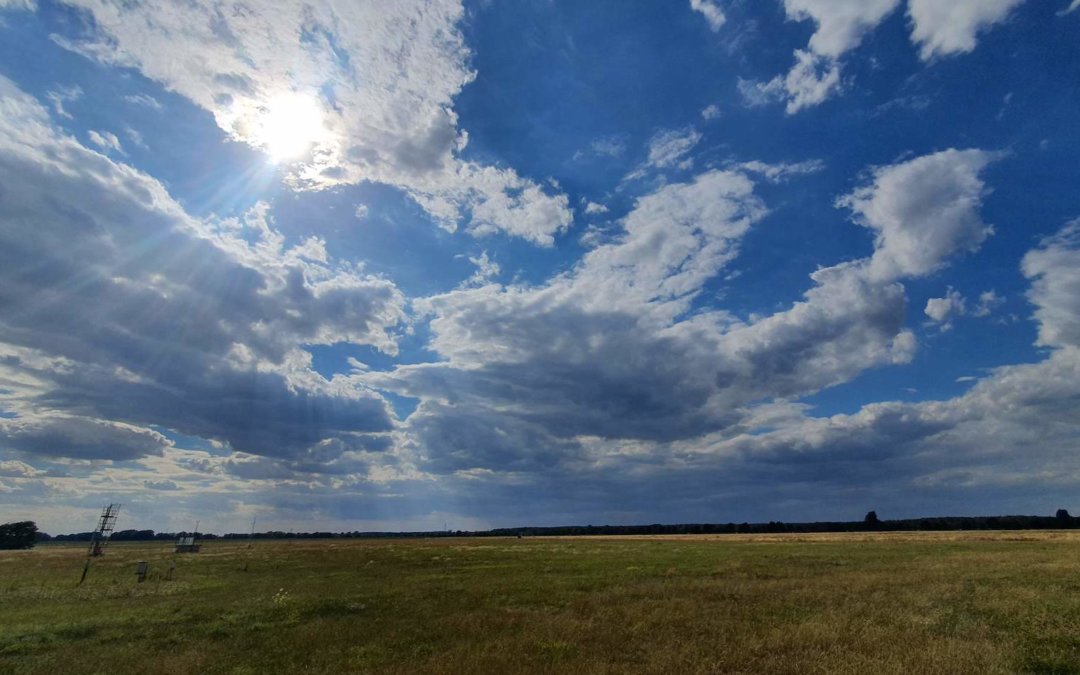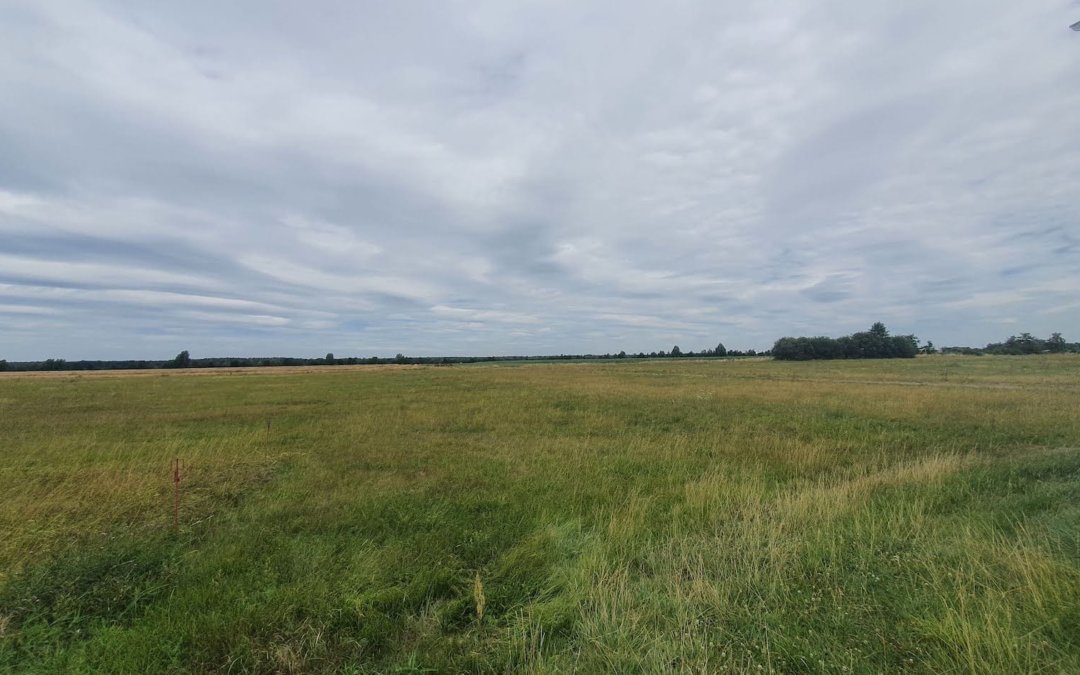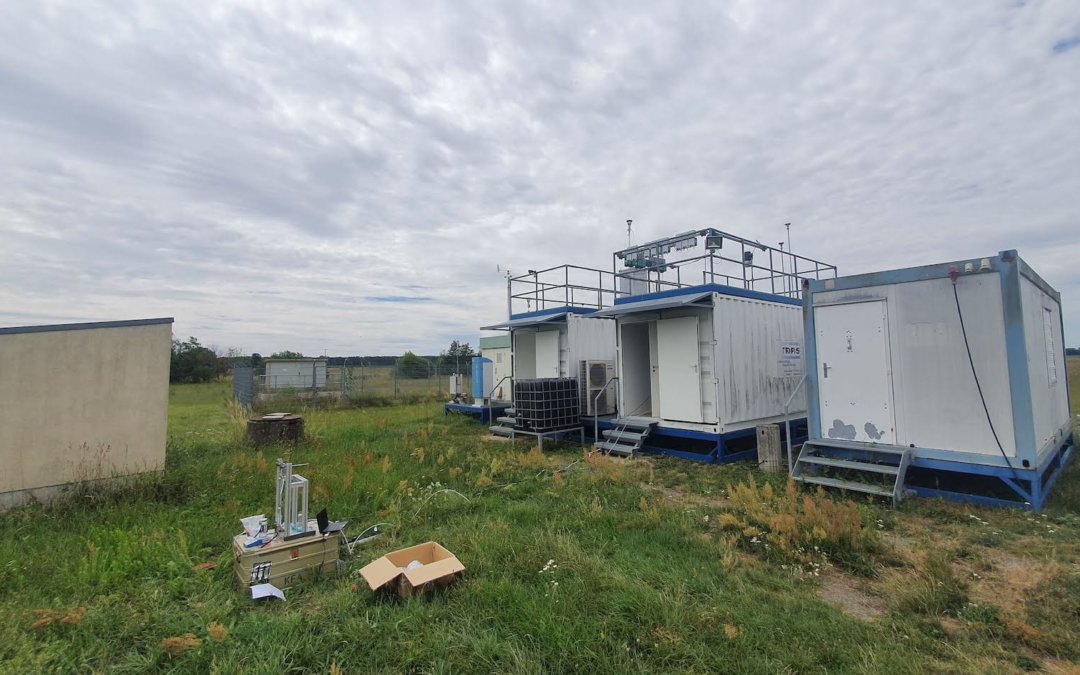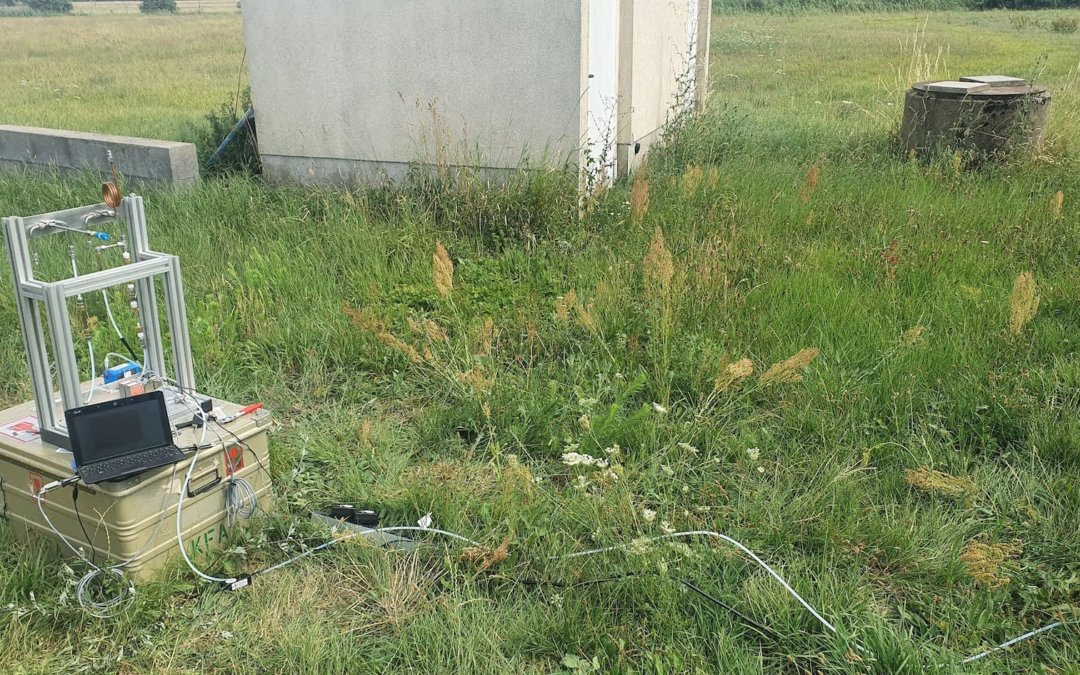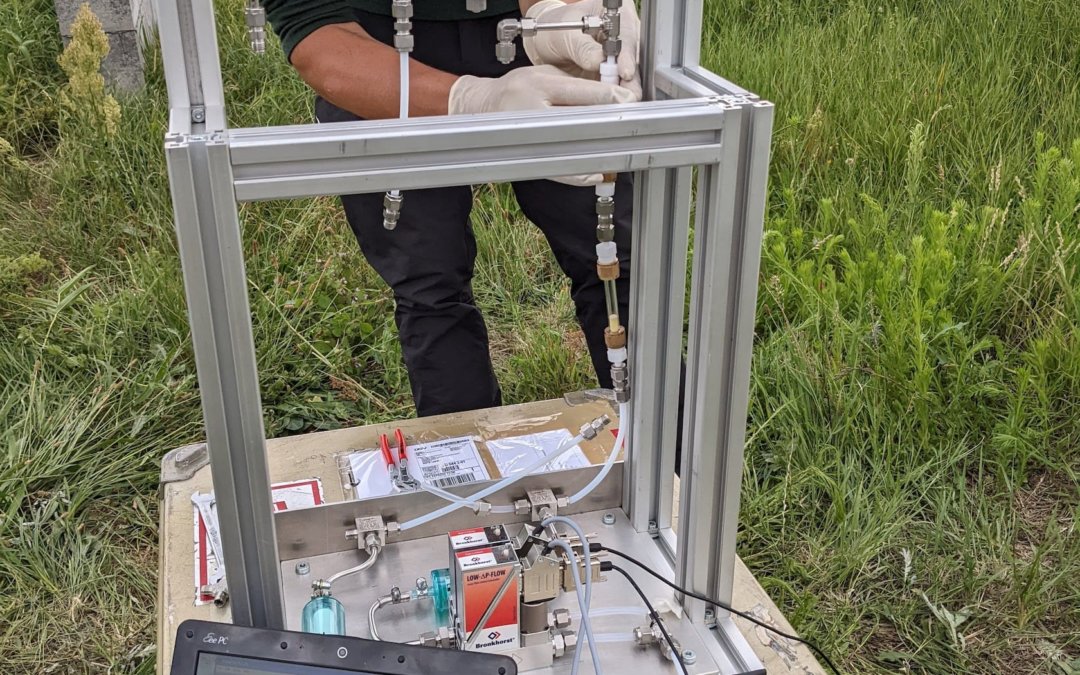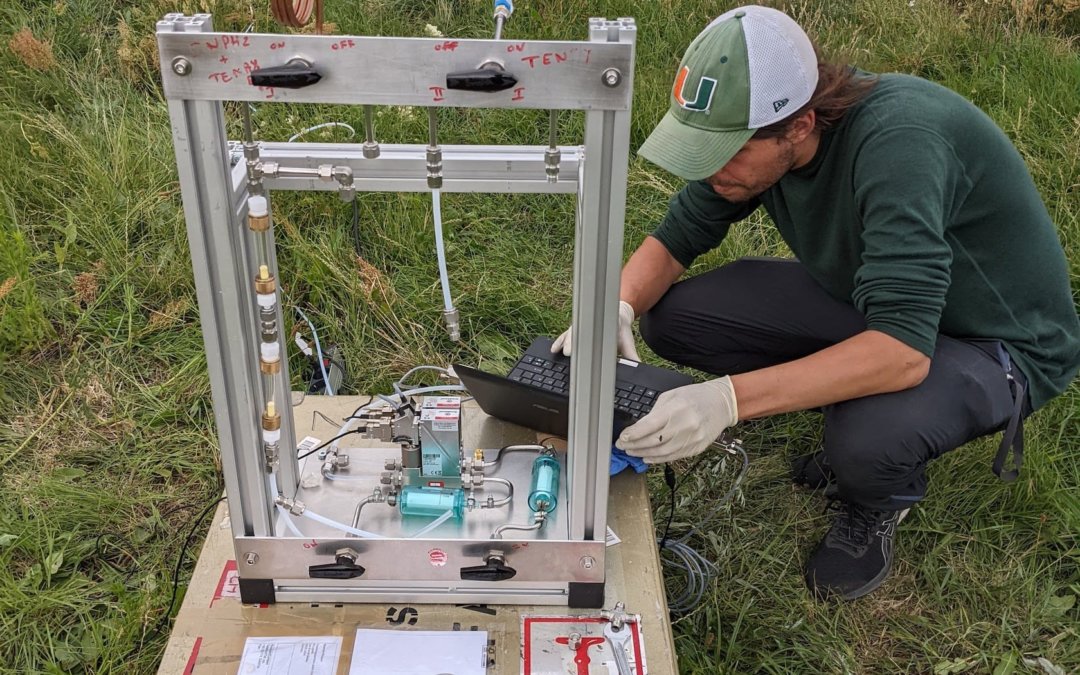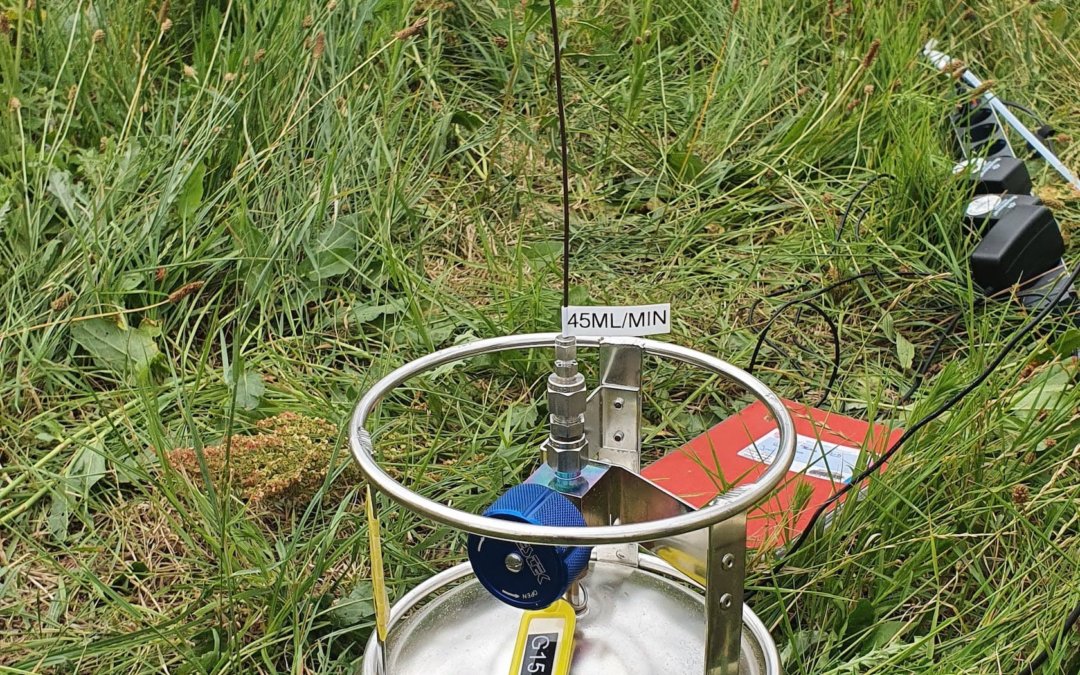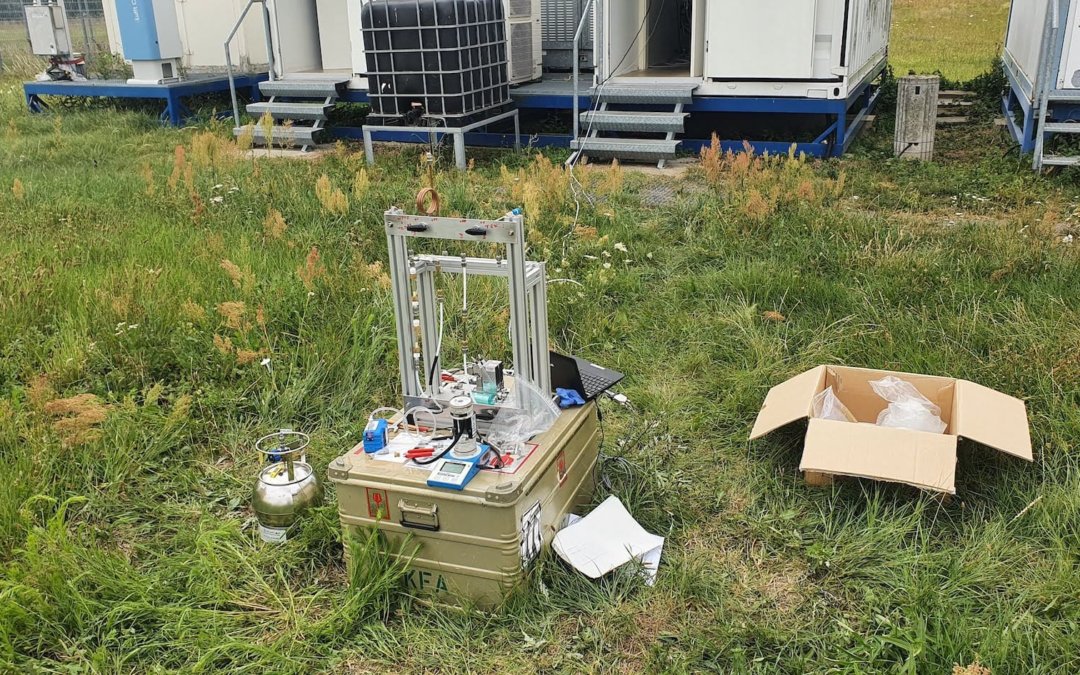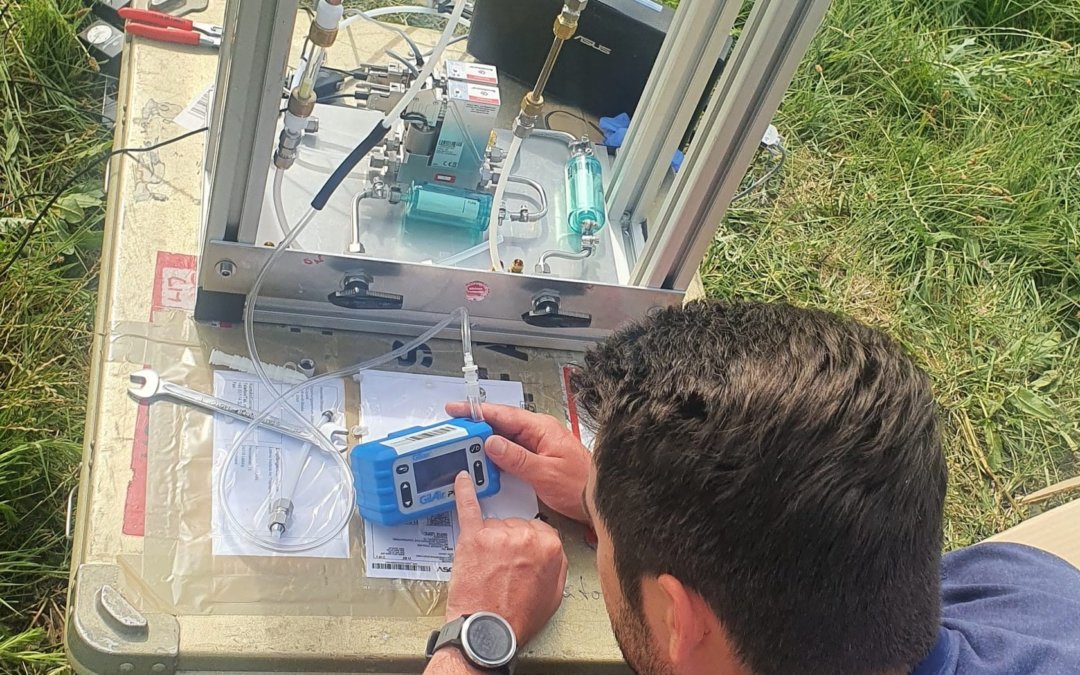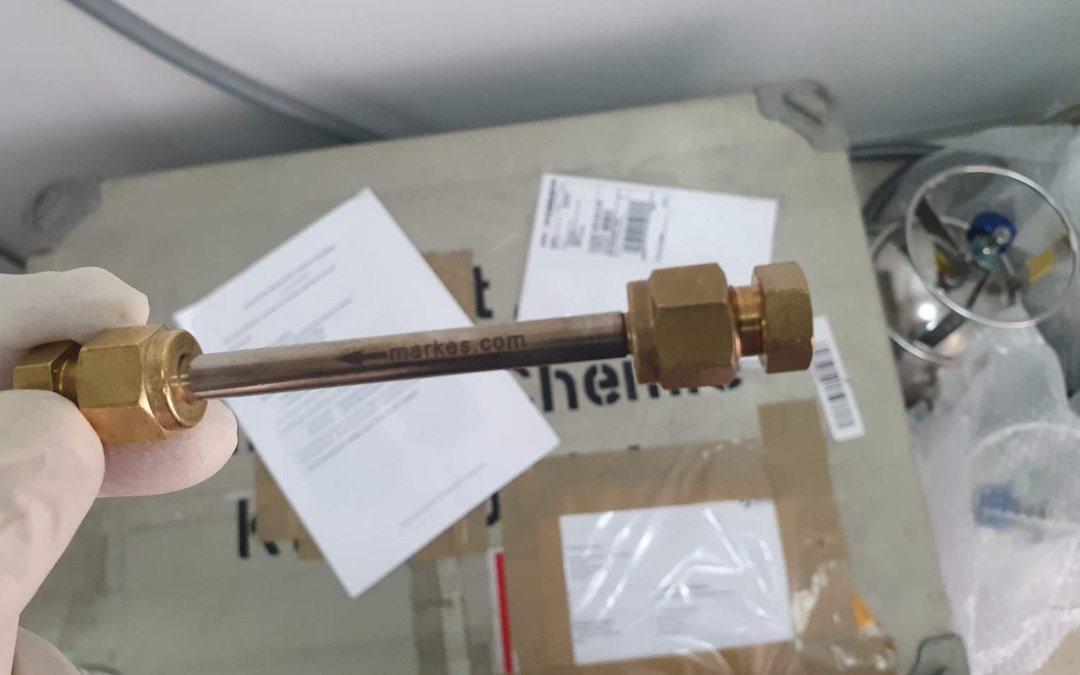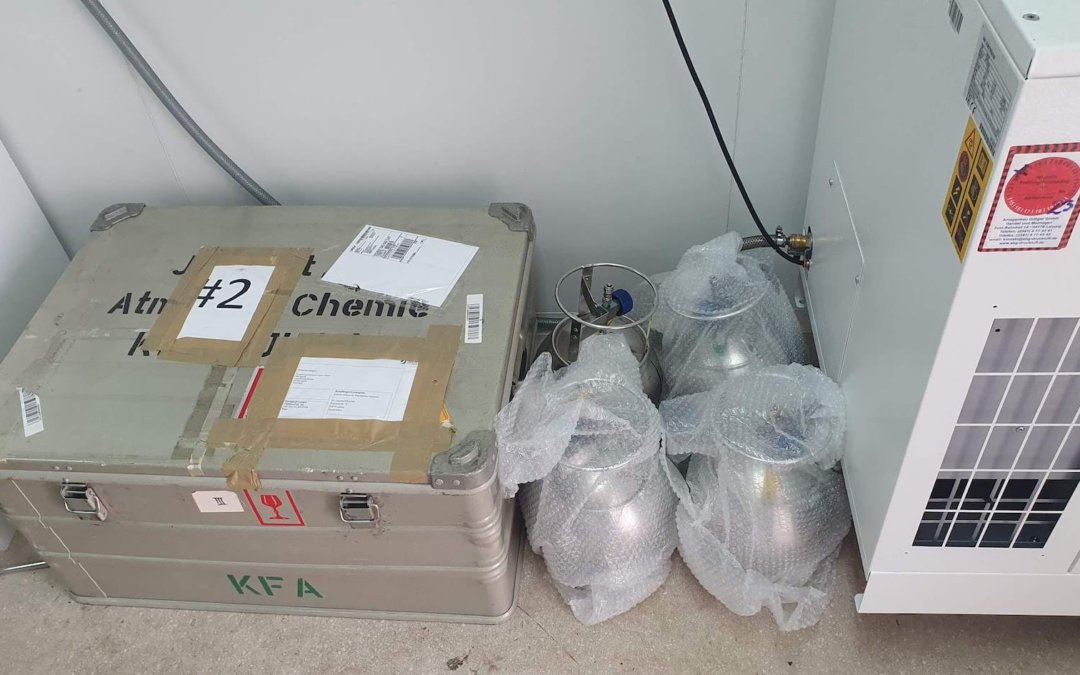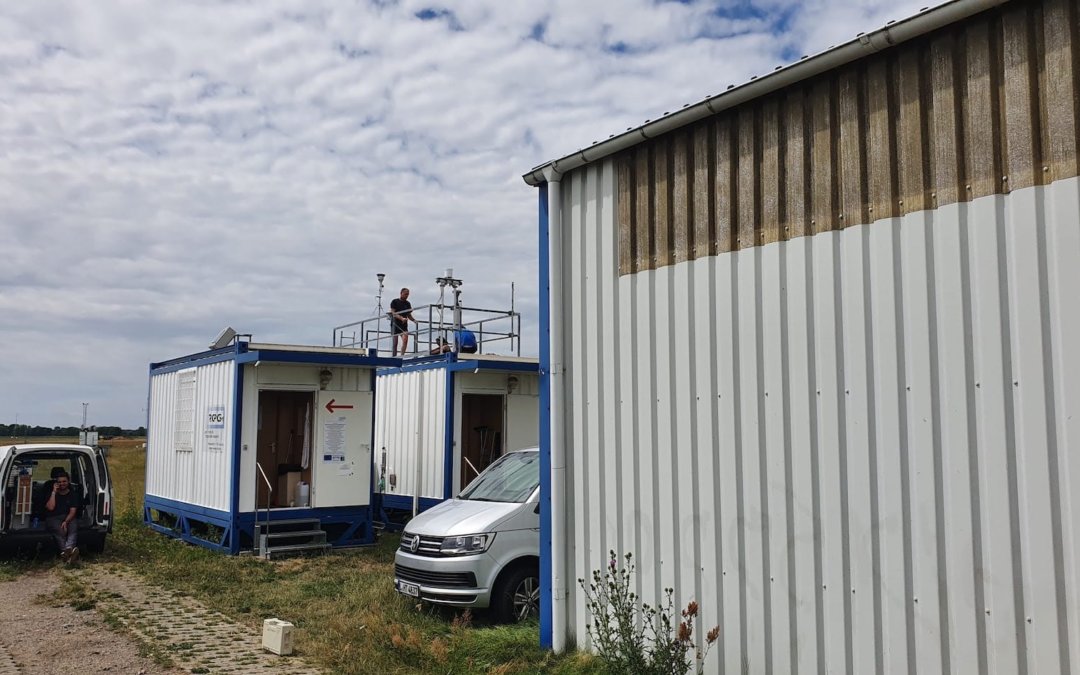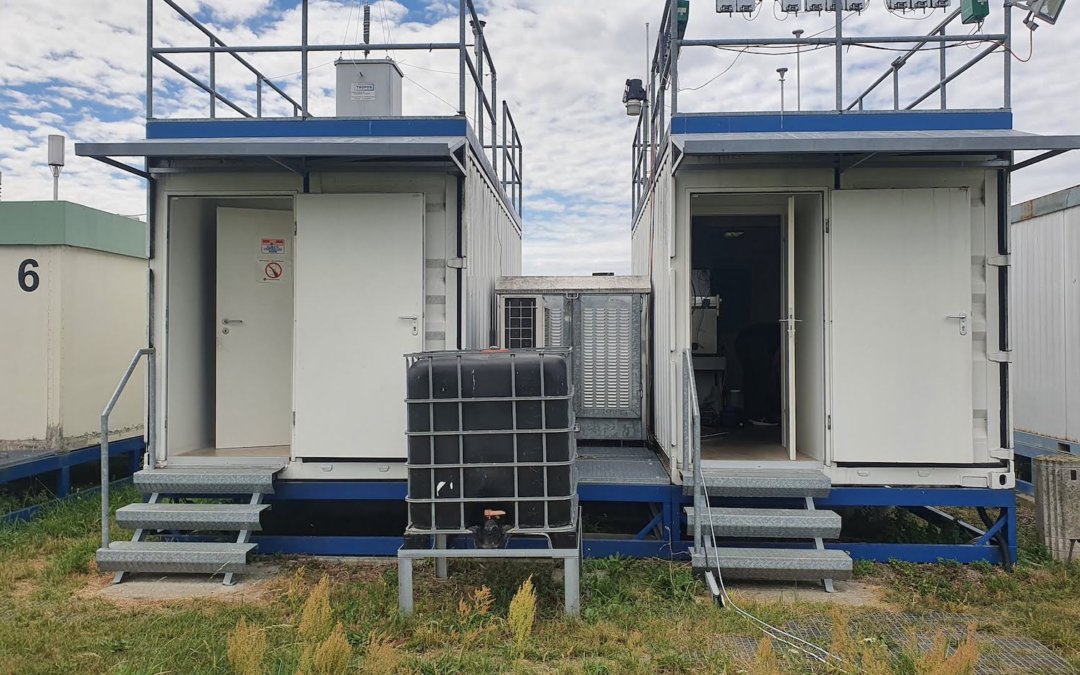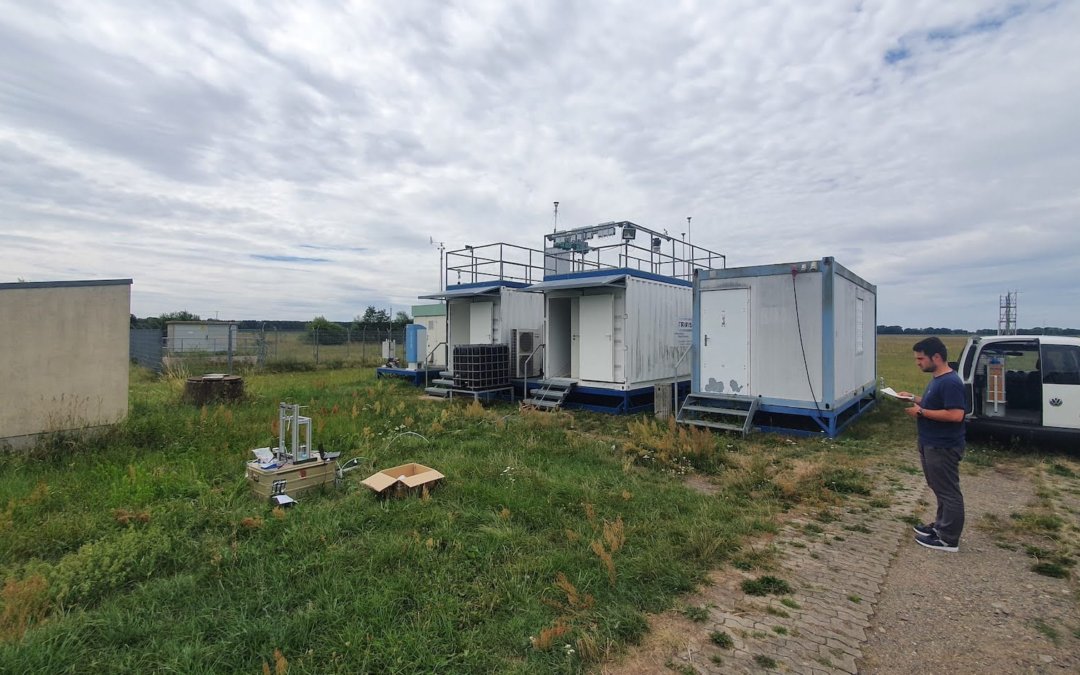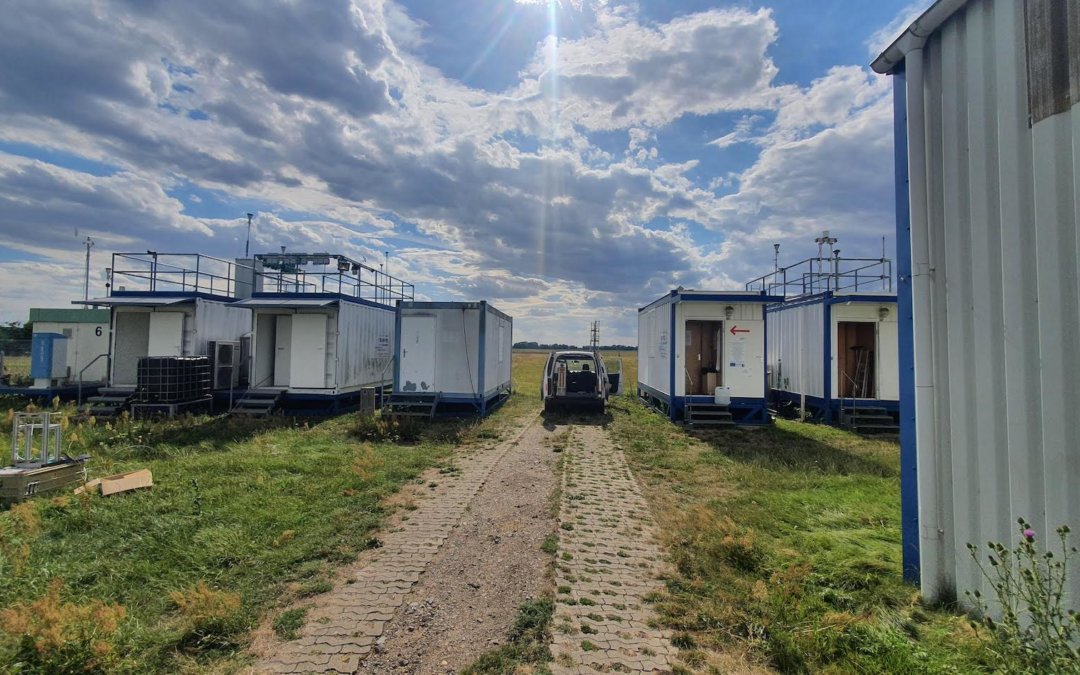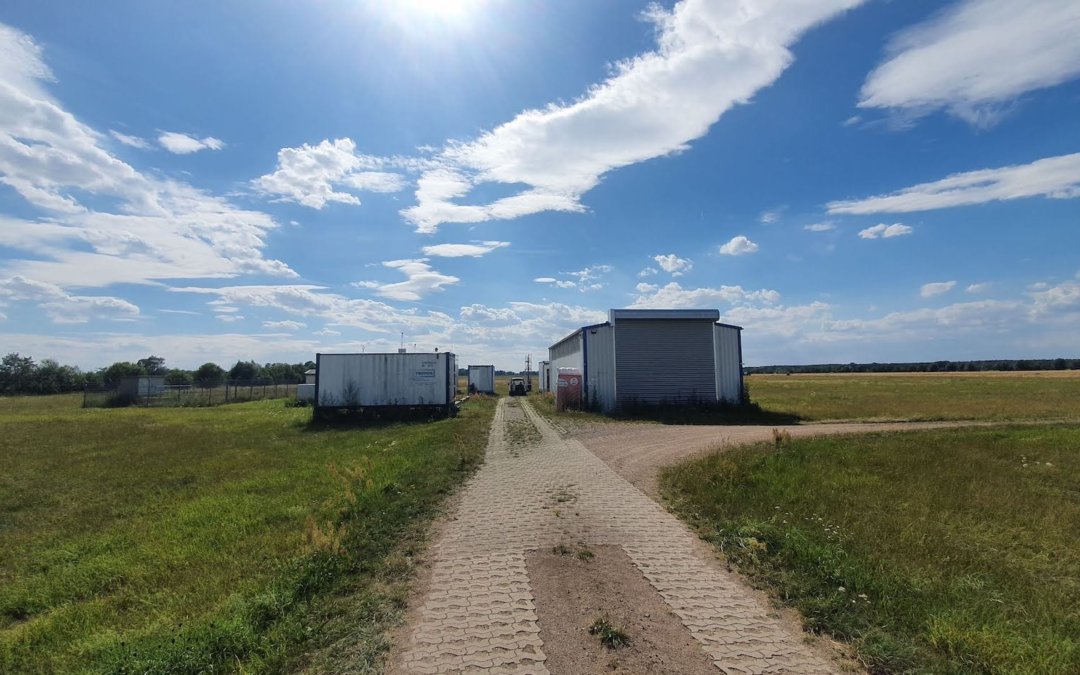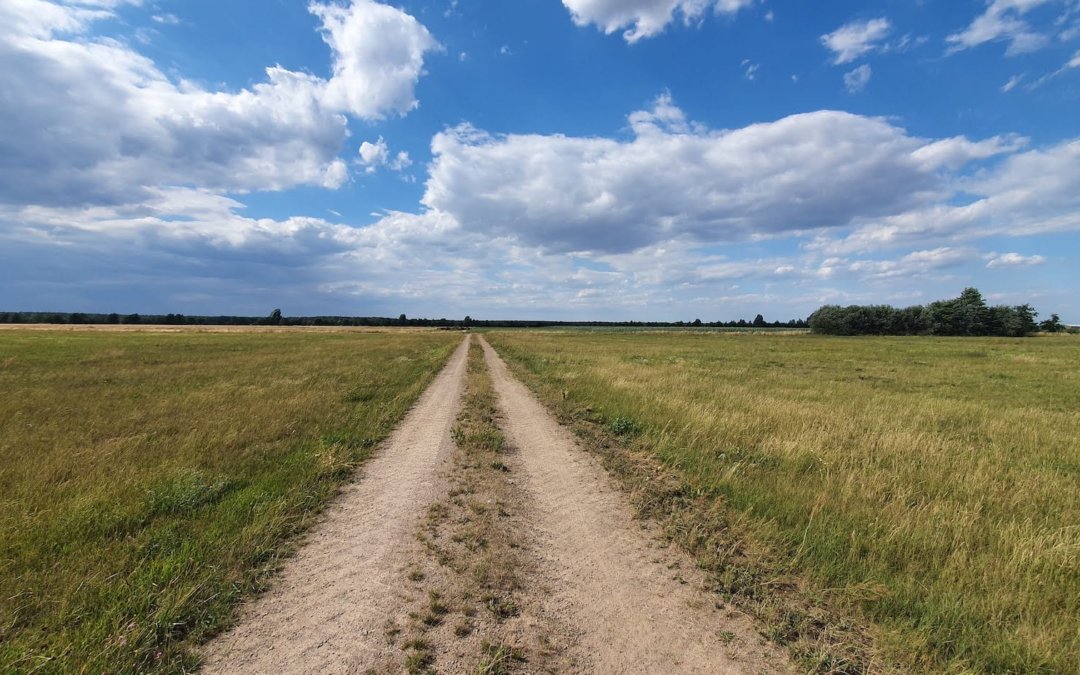The campaign in pictures
(Click to enlarge images)
Pictures: courtesy of TROPOS Leipzig – special thanks to Prof Dr Hartmut Hermann, Head of Department Chemistry of the Atmosphere.
The Melpitz site is a rural background site located in Germany near the city of Torgau in the glacial valley of the river Elbe (12°56’E, 51°32’N, 86 m a.s.l.). The measuring field is situated on a flat meadow surrounded by agricultural land. The site is operated by the Leibniz-Institute of Tropospheric Research (TROPOS), Leipzig. It is integrated into EMEP, as well as European Aerosol, Clouds and Trace Gases Research Infrastructure (ACTRIS), and Global Atmospheric Watch (GAW) networks.
The Melpitz site is a central place in Europe that has continuously measured the comprehensive size-segregated chemical-physical characterisation of the aerosol for 30 years. In addition to the classical off-line measurements, state-of-the-art measurement techniques allow time resolved quantification of individual chemicals. Field experiments for the physical characterisation of the troposphere and atmospheric chemistry can be implemented using the existing infrastructure.
The dominating wind-direction sector for Melpitz is South-West, and maritime air reaches the field after crossing a large area of the western part of middle Europe. The second main wind direction sector is East, with mostly dry continental air masses influenced by long-range transport from anthropogenic emissions in Poland, Belarus, Ukraine, Slovakia, and the Czech Republic. The two dominant air mass contributions make the Melpitz site a unique place to evaluate both western and eastern Europe aerosols properties at the same place. The Melpitz site represents a large rural area in Saxony (East and North-East German lowlands).

Interview with Dr Robert Wegener – Foschungsinstitut Jülisch (conducted in August 2022)
Forschungszentrum Jülich (FZJ) is a large-scale national research facility in the Helmholtz Association of German Research Centres. It pursues interdisciplinary research in the fields of energy, information, and bioeconomy. On the 1.7 square kilometre research campus with its 11 institutes and over 80 institute departments, 7,100 people are currently working, making the FJZ one of the largest research institutions in Europe.
Dr Wegener is linked to the Institute of Energy and Climate Research (IEK) in the department “Troposhere”.

Why are different samplers used?
For the VOC analysis during the EMEP ozone intensive programme, three different VOC sampling methods are used in addition to the online analysis. The researchers at the IMT in Lille use cartridges containing the chemical DNPH (2,4-dinitrophenylhydrazine), which reacts selectively with carbonyl-containing compounds such as aldehydes and ketones. The FMI uses TENAX cartridges, which are selective for low-volatile compounds such as monoterpenes and sesquiterpenes. We, in Jülich, take whole air samples in specially treated canisters. Since the amount of air sampled is less than when analysing with cartridges, this method is less sensitive to low-boiling compounds and OVOCs but allows sampling and quantifying VOCs with high volatility.
What were the next steps after the samples were taken? Which analysis was or will be done in Jülich?
Before sampling, the canisters were evacuated. For sampling, the canisters were filled with ambient air before being transported to Jülich. In our laboratory, the canisters are pressurised with synthetic air. The sample is sucked through a sample loop, which is kept at a temperature slightly above that of liquid nitrogen to freeze out the VOCs in the sample. In the next step, the sample loop is heated, and the VOCs are volatilised and purged onto a chromatography column using nitrogen. The chromatography column (length 120 m, inner diameter 0.32 mm) is coated with a liquid silicon film. Within the column, an equilibrium is established between the compound in the gas phase and the liquid phase. When the column is flushed with helium, the compounds elute from the column and generate a signal in the FID detector or mass spectrometer. The compounds are separated from each other due to their different interactions with the column film. The more the compound interacts with the column film, the later it will elute from the compound. Since the chromatographic column is installed in an oven, less volatile compounds can also be analysed. Plotting the time after injection versus the detector signal creates a chromatogram in which the compounds appear as peaks. The area under the peak is proportional to the amount of the compound in the sample.
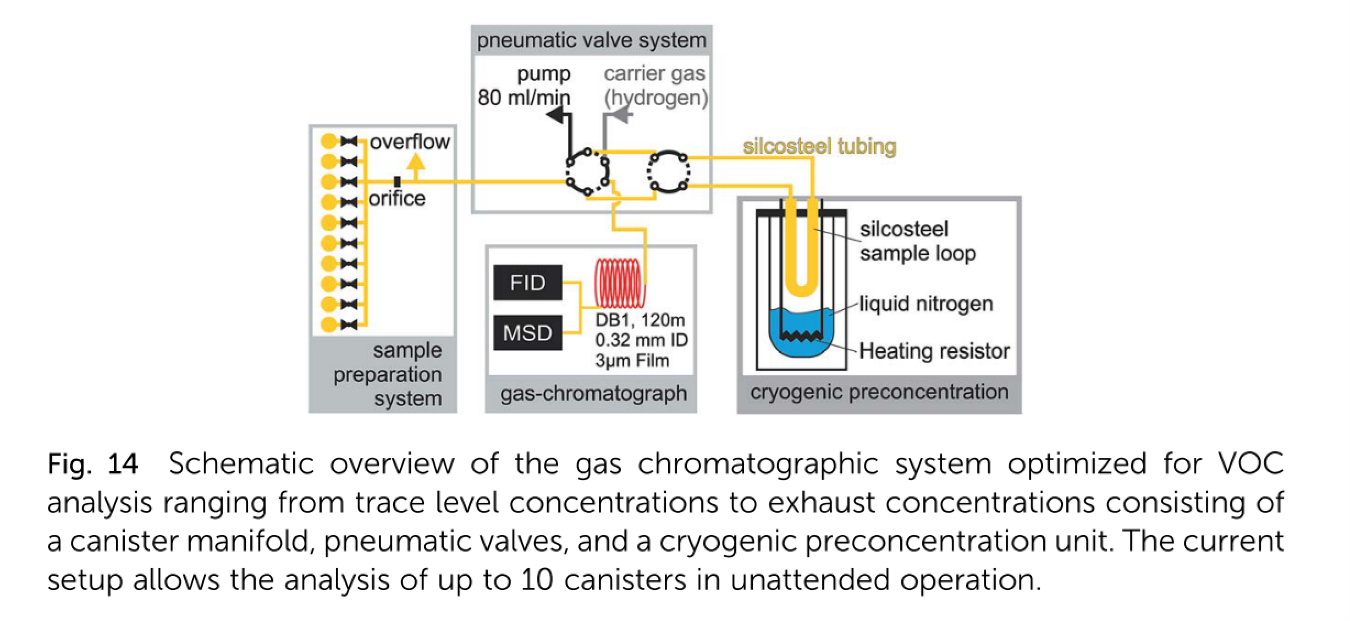
From: Ehlers, C., et al. (2016). “Twenty years of ambient observations of nitrogen oxides and specified hydrocarbons in air masses dominated by traffic emissions in Germany.” Faraday Discussions 189: 407-437.
How many samples will you analyse in total & from which sites?
In total, we receive 64 samples from eight sites. Sampling was done at EMEP sites in Austria (Illmitz), Belgium (Vielsalm), Germany (Melpitz), Spain (Ciemat-Madrid), France (Donon, Villeneuve-d’Ascq, La Coulonche) and Ireland (Mace Head). We will take a different sample of different sizes to account for the spatial and temporal variability of the VOCs all over Europe.
How long does it take to get results?
The samples have been analysed in the GC/MS. At present, we identify compounds in the chromatogram and calculate their amount fraction by comparing the chromatograms from ambient air with chromatograms from a gas standard. First results will be presented at a workshop in September.
How would results compare? (from different samplers? From other labs?) Who does that?
As explained above, different laboratories focus on other compounds. However, some compounds are accessible by different methods and whose concentrations can be compared. The results will be discussed at the workshop. All laboratories are linked to the Global Atmosphere Watch (GAW) programme and the ACTRIS network. The networks aim to harmonise measurement methods and improve data quality. The World Calibration Centre for VOCs with GAW and the Calibration Centre for VOCs within ACTRIS are both located in Jülich.
Will a second campaign be needed next year?
A second campaign is scheduled for the summer of 2023. A comparison with the model will show if, e.g. observational sites have to be changed and where additional observations are needed.

